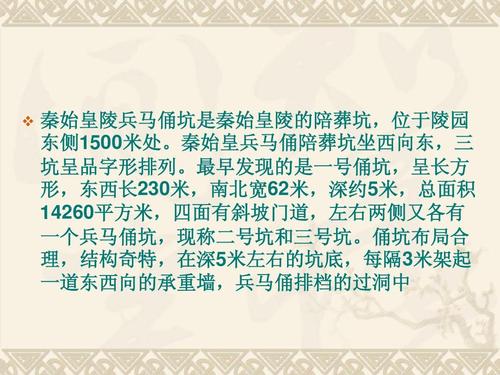
The Spiritual Significance of the Terracotta Army
Buried for Millennia, Revealed to the World
For over two thousand years, a silent army lay buried beneath the earth near modern-day Xi'an, China. It wasn't until 1974, when farmers digging a well stumbled upon fragments of terracotta, that the world began to grasp the sheer scale and magnificence of the Terracotta Army. This accidental discovery unveiled an astounding collection of over 8,000 life-sized terracotta figures, each meticulously crafted with unique features and bearing the weight of a fascinating history.
The Purpose and Meaning of Clay Warriors
The Terracotta Army is much more than just an impressive collection of statues; it's a profound testament to ancient Chinese beliefs and the personality of its commissioner, Qin Shi Huang, the first emperor of a unified China. The army's creation and burial served a multifaceted purpose, intertwined with the emperor's ambitions and the prevailing spiritual concepts of the time.
Qin Shi Huang's Obsession with Power
Qin Shi Huang was known for his ruthless ambition and desire for absolute power. He united the warring states of China and established a centralized empire under his iron rule. The Terracotta Army, a vast and intimidating force, served as a physical manifestation of his authority, a potent symbol designed to inspire awe and fear in equal measure. It showcased his ability to command resources and manpower on an unprecedented scale.
A Quest for Immortality and Afterlife Dominion
The emperor's aspirations, however, extended far beyond the mortal realm. Qin Shi Huang was deeply preoccupied with attaining immortality, seeking elixirs and consulting with mystics in pursuit of eternal life. The Terracotta Army, interred alongside him in his vast mausoleum complex, reflects this obsession. They were intended not merely as guards for a tomb, but as a loyal legion to serve him in the afterlife, ensuring his continued dominance even after death.
An Army Frozen in Time
The sheer scale and detail of the Terracotta Army provide invaluable insight into the military organization, weaponry, and cultural practices of the Qin dynasty. The variation in ranks, uniforms, and even facial expressions offer a glimpse into the social hierarchy and artistic skill of the time. More than just protectors, these figures are a window into a bygone era, silently narrating stories of a mighty empire and its ambitious ruler.
The Enduring Legacy of the Terracotta Army
The Terracotta Army continues to captivate and intrigue people worldwide. It serves as a powerful reminder of the transient nature of power while simultaneously highlighting the enduring legacy of human ambition and artistic achievement. The meticulous craftsmanship and the sheer scale of the project continue to resonate across millennia, offering a tangible link to a pivotal period in Chinese history.
Q&A
Q: What is the significance of the different ranks and uniforms found within the Terracotta Army?
A: The variety in ranks and uniforms showcased in the Terracotta Army offers historians valuable insight into the military structure and social hierarchy of the Qin dynasty. Differences in armor, headwear, and even facial hair styles all point to specific roles and ranks within the army, reflecting the rigid social order of the time.
Q: Why is the Terracotta Army considered one of the most important archaeological discoveries of the 20th century?
A: The Terracotta Army is significant not only for its scale and artistry but also for the invaluable historical information it provides. The figures, weapons, and even the construction of the site have greatly enhanced our understanding of Qin dynasty military practices, culture, and beliefs about the afterlife.
Q: What do the individual features of the Terracotta Warriors tell us about the time period?
A: The unique facial features, hairstyles, and expressions on each Terracotta Warrior are testaments to the skill of the artisans and the importance placed on individuality even within a vast army. These variations suggest that the artists may have drawn inspiration from real soldiers, providing a fascinating glimpse into the faces of the Qin dynasty.